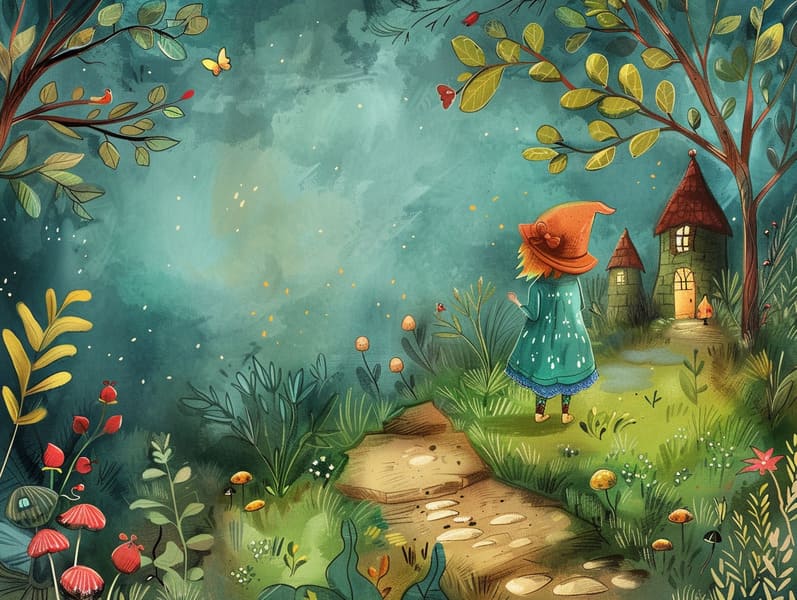The Formation of Fairy Tales for Kids and the Consistent Captivation.
The Formation of Fairy Tales for Kids and the Consistent Captivation.
Blog Article

Fairy tales have old origins. These narratives have been whispered from one generation to the next well before they were ever written down. They sprang from a variety of civilizations, including Eastern traditions. They were initially shared among older generations, often carrying themes and messages mirroring the societal norms and beliefs of the time.
The Brothers Grimm, Jacob and Wilhelm Grimm, were among the first to assemble many of these beloved narratives. Their published works, "Grimm's Story Collection," included stories like "The Little Glass Slipper," "Hansel and Grethel," and "Snow-White and Rose-Red," which have since become staples in the world of classic fairy tales. Similarly, Hans Christian Andersen's magical fairy tales, such as "The Little Mermaid," and "The Little Duckling," have captured hearts worldwide, establishing their place in the pantheon of classic fairy tales.
Despite their ancient origins, these tales remain as important as ever, especially as children's bedtime stories. These delightful tales are now available in various formats, including vibrantly illustrated books, fantastical animations, and web-based fairy tales.
Their lasting appeal can be connected to several charming aspects:
Valuable Lessons: Old fairy tales often share important moral lessons. Tales like "The Story of the Boy Who Cried Wolf" teach the importance of honesty, while "The Tale of the Tortoise and the Hare" emphasize the traits of persistence and humility. These tales offer young readers clear distinctions between moral and immoral, shaping their moral compass in a subtle yet lasting way.
Compassion and Knowledge: Timeless fairy tales frequently illustrate protagonists facing tests and troubles, encouraging readers to sympathize with their struggles and champion their triumphs. For instance, "The Story of Beauty and the Beast" conveys the necessity of looking past the exterior to recognize the real character of a being, building understanding and knowledge.
Cultural Understanding: Many classic fairy tales are rooted in the cultural contexts from which they emerged. Reading these tales can provide illuminating insights into different traditions, nurturing a sense of cultural awareness and knowledge.
Creativity and Imagination: The supernatural elements in fairy tales—fairy godmothers—ignite children’s creative dreams. These tales bring readers to fantastical realms, triggering inventive dreams and a sense of curiosity that continues a lifetime.
Classic fairy tales are not only magical but also didactic. They provide captivating tools in cultivating various intellectual and emotional capacities in little ones. When classic fairy tales are voiced, they improve language proficiency by bringing new lexicon and elaborate sentence structures. This practice also strengthens hearing perception and mental focus, as young ones stay focused, looking forward to see what happens next.
Furthermore, deliberating the themes and characters of timeless fairy tales can cultivate problem-solving abilities and thought processes. Little ones are guided to see patterns, guess what will happen, and comprehend cause and effect. These debates also assist the young utter their thoughts and feelings, contributing to their emotional intelligence.
In today’s digital era, the availability of internet fairy tales has made these tales more acquirable than ever. Online resources and applications give comprehensive collections of bedtime fairy tales that can be enjoyed or listened via anytime, anywhere. Fairy tales spoken are particularly in demand, offering an engaging way for young ones to delight in these charming stories. Sound books and narrated videos bring characters and settings to life, often augmented by delightful musical scores and songs that augment the tale experience.
The lasting appeal of old fairy tales lies in their ability to transform to the present while retaining their basic principles. Contemporary reimaginings of these stories often highlight more representative figures and modern settings, making them pertinent to today’s audience. However, the fundamental themes of fortitude, goodness, and equity remain unchanged, continuing to touch kids of all ages.
Timeless fairy tales also offer a sense of comfort and knownness. They put forth a orderly narrative with a recognizable beginning, middle, and end, often ending with the conclusion of conflicts and the triumph of good over bad. This foreseeability can be placating for little ones, furnishing a sense of stability in an ever-changing world.
Classic fairy tales continue to entrance and train new generations, maintaining their radiance and impact in modern find it here society. As children's night stories, they disclose a perfect blend of charm and understanding, encouraging moral values, empathy, and creativity. The proliferation of digital fairy tales and the widespread nature of fairy tales read out loud make sure that these old fairy tales remain attainable to new generations.
By defending and disseminating these stories, we continue to acknowledge the rich tapestry of mythology and cultural heritage. Whether you are viewing a richly illustrated book, viewing a digital library, or listening on an audiobook, the delight of traditional fairy tales is always within reach. These tales convey of the timeless ability of fairy tales and its ability to gather us across time and space.
Regardless if you are discovering a artistically illustrated book, discovering a internet library, or hearing an spoken story, the charm of bedtime fairy tales is always within reach.
These narratives highlight of the invariable presence of tales and its ability to tie us across centuries and lands, forging a link that captivates and teaches alike.